
















Radiography
This is an example of a normal radiograph of the hand.
Question 1:
What is the basic quality of tissue that determines whether a structure appears light or dark on a radiograph? When clicking the links below, try to determine what tissue is highlighted.
Radiography is all about density. Density is generally a fairly intuitive property for many body tissues--for example, it seems obvious that bone is more dense than air. However, for some important tissues (muscle, fat, blood), their ordering by density takes more thought. For example, if you have ever cooked, you know that fat will float on water, hence fat is LESS dense than water. It also seems likely that muscle is MORE dense than water, so muscle should be lighter grey on radiographs than fat. You can put the entire list of body tissues in order based on density, and this can be helpful in looking at radiographs. If you go back to the unlabeled image, you can see at the edges of the hand that the difference between FAT and MUSCLE is subtle--they are close to the same density, but these subtle findings are important to recognize when looking at these types of images.
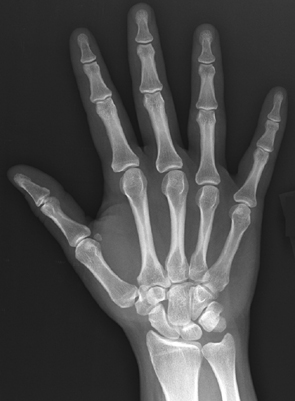
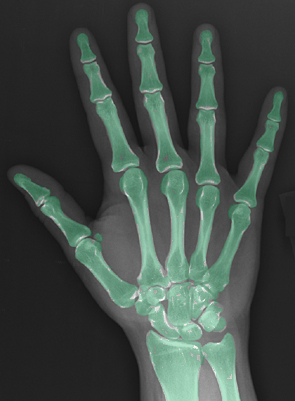
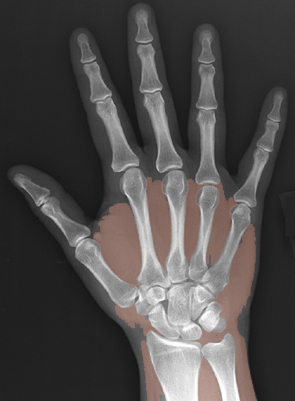
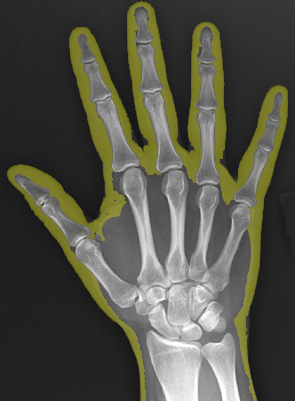
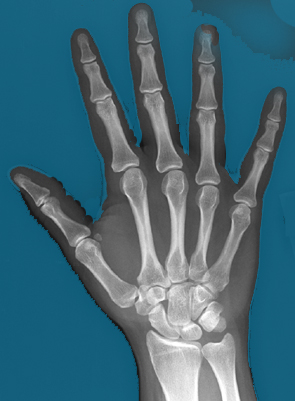

Radiography
This is the same normal hand radiograph with various structures labeled. Try to identify them for yourself before clicking the links.
Question 2:
What tissue is in the dark space between the various bones of the hand?
The joint space looks fairly dark on a normal radiograph, and is made up of cartilage and a thin film of fluid. The fluid layer is too thin to visualize. Cartilage seems like it might be fairly dense, since it is firm to the touch. But it is mostly filled with water, acting as a shock absorber, so its overall density is in between muscle and water.
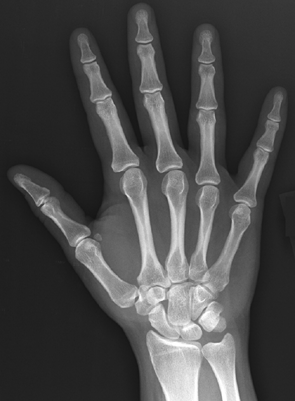
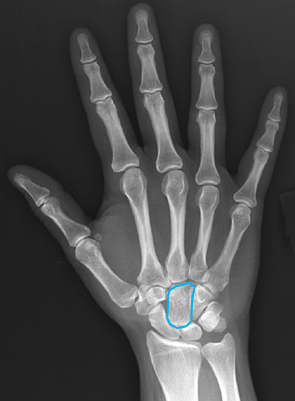
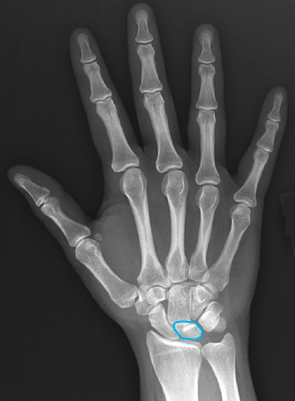
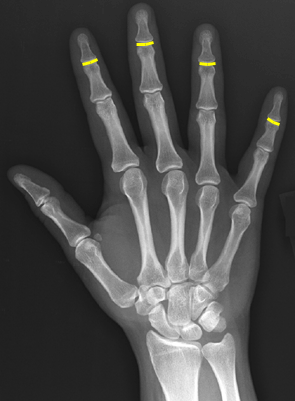
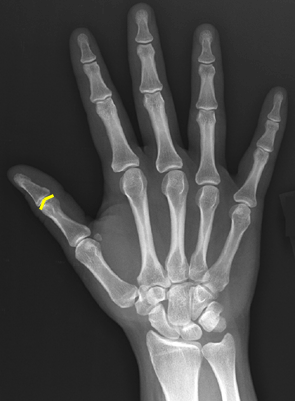
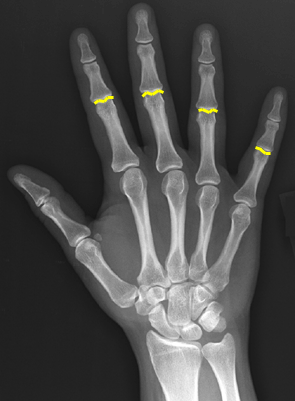
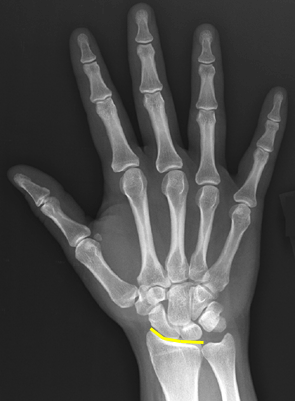
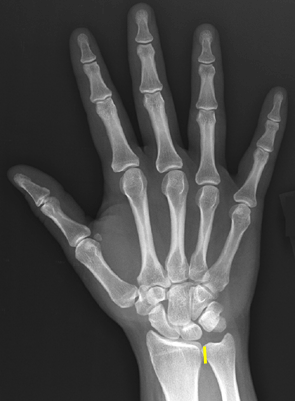
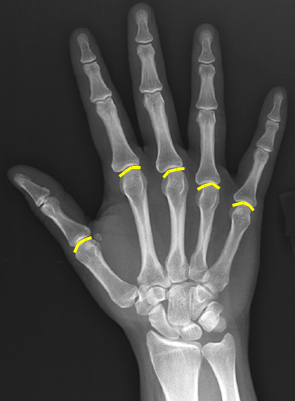
Radiography
This is a diagram of how a radiograph is obtained
Question 3:
Which modality of imaging (considering CT, MR, US, Radiography and NM) has the highest spatial resolution?
Spatial resolution is a measurement of how SMALL a structure can be visualized. Radiography has by far the highest spatial resolution of any of the types of medical imaging. In fact, special monitors and very high resolution receptors are used for a specialized type of radiography called mammography (radiography of the breasts). Other modalities have other strengths, but for visualizing tiny structures and fine detail, radiography is best.
Important features of Radiography to keep in mind are the following:
-radiation, but relatively low dose
-relatively large field of view (can visualize large areas of the body at once)
-highest spatial resolution
-limited by overlap of tissues




